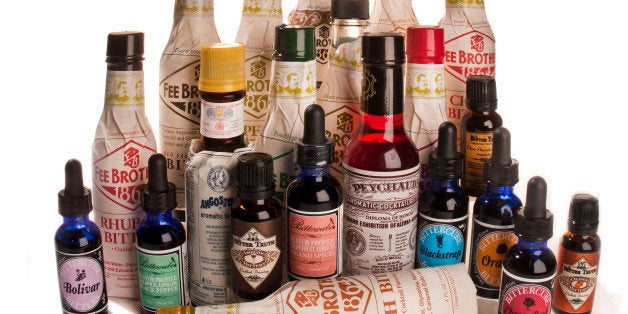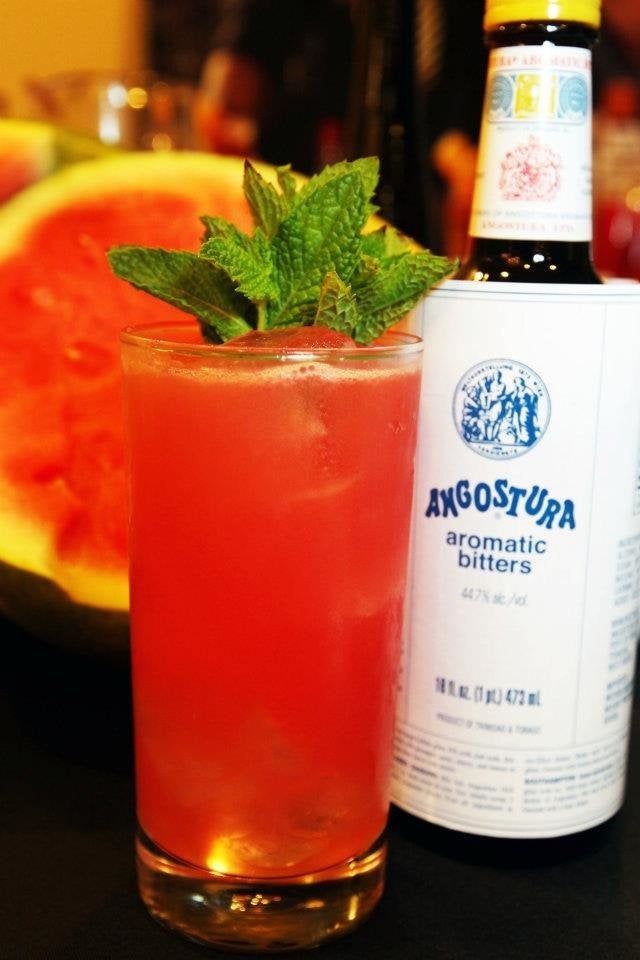
We spend a lot of time pretending to know what we're talking about when we're ordering cocktails. We feel comfortable saying this out loud, because we know you do it, too. No shame necessary. Cocktails are confusing and mixologists (not bartenders -- there's a difference) can be pretentious and intimidating. We're not saying that every cocktail bar we frequent makes us feel stupid for asking questions, but there are certain varieties (like the ones with no standing allowed) that tend to make us feel like jerks if we can't identify every ingredient in our drink. Sorry we don't know every obscure liqueur behind the bar, and you know what? We have no idea what bitters are. There, we said it.
Do you know what bitters are?
Bitters are alcoholic spirits that are infused with herbs, roots, fruit and leaves. They typically consist of water and alcohol, which has been steeped with a combination of botanicals. Made with high proof alcohol and strong flavors, bitters are highly concentrated; just a dash or two is necessary in a cocktail, and you're never supposed to drink them alone. (Potable bitters, or bitters you can drink on their own, like Italian amari, are a distinct category.) The Kitchn explains that bitters use high proof alcohol for "maximum flavor extraction and preservation," and that for a neutral flavor, vodka and grain alcohol, like Everclear, are best. You can also make bitters using other alcohols, like 101-proof bourbon or 151-proof rum. With so many possible combinations of botanicals and alcohols, the world of bitters is vast and varied.
So what's their point? "Bitters are like the spice rack of the cocktail world," Ira Koplowitz, co-founder of bitters company Bittercube, told Journal Sentinel. You add a drop or two to a cocktail to balance out flavors and add depth to a drink.
Liquor.com calls bitters the defining ingredient that makes a cocktail a cocktail, and not just another alcoholic beverage. Fine Cooking explains that a newspaper article from The Balance and Columbian Repository in 1806 defined a "cock tail" as "a stimulating liquor, composed of spirits of any kind, sugar, water and bitters." The "stimulating" factor made the "cock tail" an acceptable beverage to drink at breakfast, Esquire notes. This original concoction saw many variations, eventually forming cocktail culture as we know it today. According to Fine Cooking, when people started returning to the classic mix, they called it the "Old Fashioned."
While they're used today to add flavor and depth to cocktails, bitters were originally sold as digestive aids. The two most iconic bitters, Peychaud and Angostura, were developed as medicinal tonics. The pharmacist Antoine Peychaud started selling Peychaud's bitters in 1838 in Louisiana, and the iconic red bitters are used in the classic New Orleans cocktail, the Sazerac. Angostura bitters were developed as digestive relief in the 1820s when a doctor by the name of Johann Gottlieb Benjamin Siegert was serving as Surgeon General to the armies of Simon Bolivar. They're floral and spicy and used to make Manhattans.
Today, bitters are back. The boom in cocktail culture has seen a resurgence in the use of bitters, from the old standbys to new, small-batch bitters like Brooklyn Hemispherical Bitters, and even homemade bitters.
For a guide to making your own bitters, check out this great article from The Kitchn. You can also buy bitters in liquor stores and online at places like coctailkingdom.com or dandelionbotanical.com.
